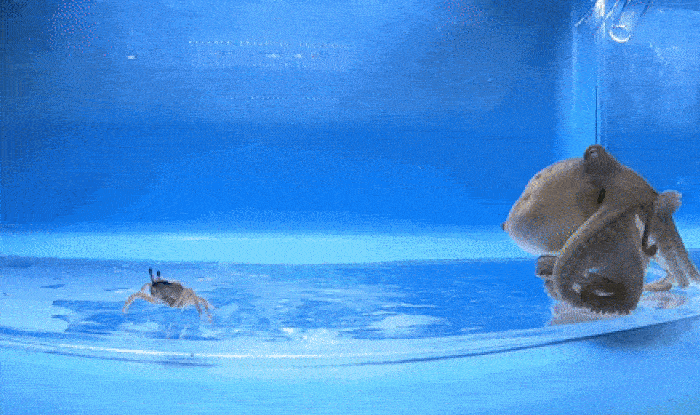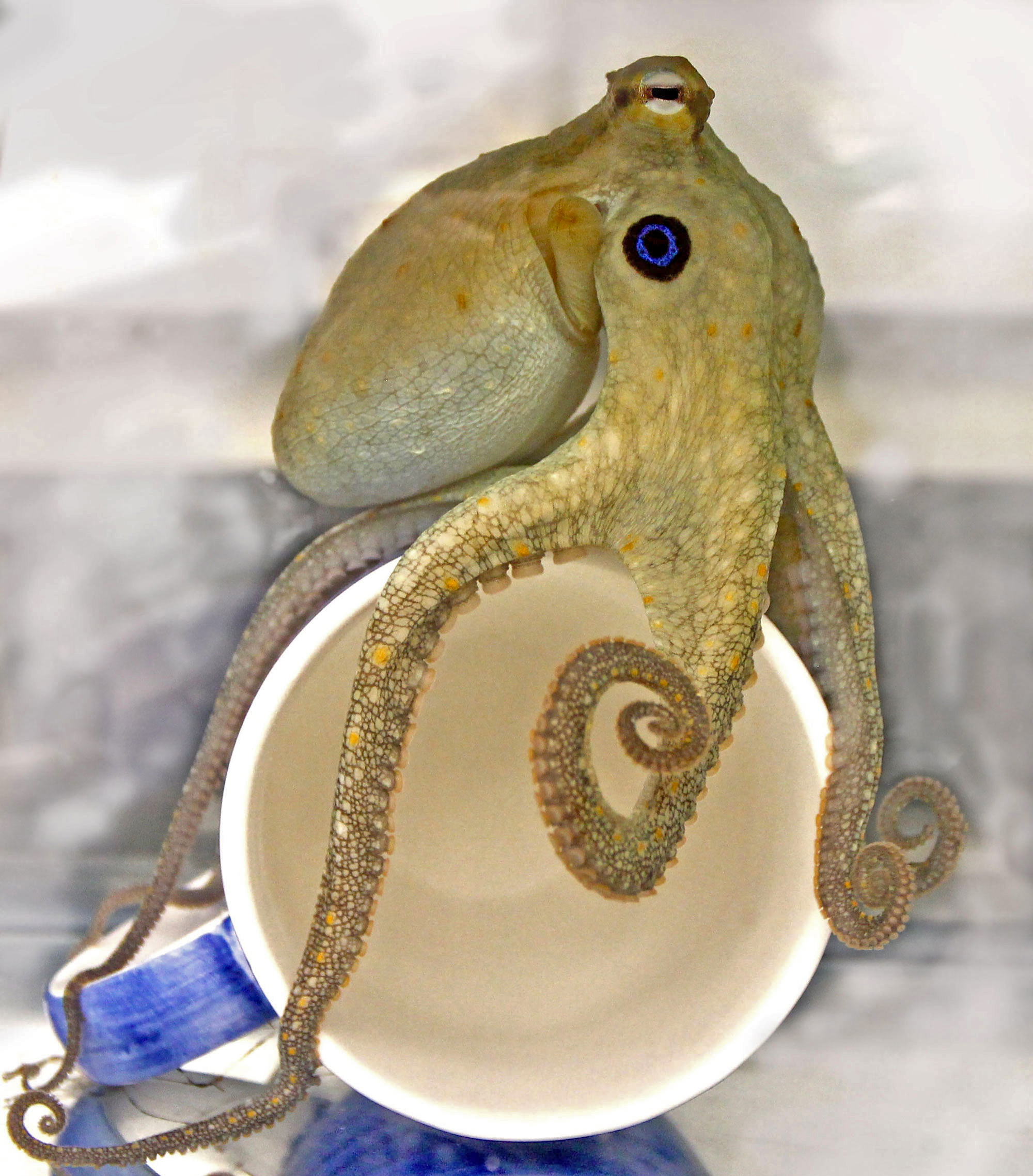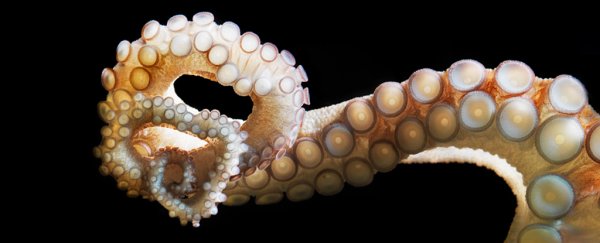With strange smarts, shifting skin, and squishy bodies powered by three hearts, octopuses can get up to all sorts of mischief. Their camouflage mastery can allow them to remain hidden while they stealthily explore their surroundings with noodley limbs that each have a mini-mind of their own. With them, these sea aliens can reach out to taste you.
Now, we may have some idea of just how this touch-taste ability works.
As their arms stretch out across seabeds, probing with their thousands of independently moving, finger-like suckers, it turns out octopuses are using independent taste-sensing as well as unique touch-sensing cells to capture a sensory map of their surrounds.
Molecular biologist Lena van Giesen and colleagues from Harvard University identified these chemosensory cells - cells that detect molecules like our smell and taste cells do - in the California two-spot octopus's (Octopus bimaculoides) suckers' skin.
 Pouncing California two-spot octopus. (Peter Kilian)
Pouncing California two-spot octopus. (Peter Kilian)
These chemotactile cells, with thin branched ends, can signal continuously (tonic firing), but they're dependent on being close enough to touch, rather like our tongues. The chemosensory cells can respond to multiple flavours, including chemicals found in cephalopod ink, and 'warning' chemicals emitted by potentially toxic prey.
"This is highly useful for the octopus to detect prey hidden within seafloor crevices or areas inaccessible from its traditional sense organs," molecular biologist Nicholas Bellono told ScienceAlert.
Within the skin of the suckers, the team also found expected and more familiar mechanosensory cells, with stubby branched ends. These cells only fire during the start of contact before the signal is exhausted (phasic firing).
This type of signalling allows octopuses to tell if they are touching inanimate objects (where the signal would cease on unmoving contact) or squirming prey, where the signal would fire again in response to losing and regaining contact.
"We find octopuses explore their environment using stereotypical touch motions that are distinctly modified by contact with different [molecules that trigger the chemotactile receptors]," the researchers explain in their paper.
They sussed out these skills by observing the animals, conducting tests, and looking at what proteins are being expressed by genes in specific sucker cells. This method is called transcriptomics, and it allows researchers to see what a cell does by analysing what proteins are actively in use inside it.
 Octopus touch-tasting a cup. (Lena van Giesen)
Octopus touch-tasting a cup. (Lena van Giesen)
The team found that some of the chemotactile cells activated strongly in response to fish and crab extract. But they suggest that as well as detecting prey, this ability to touch-taste could also trigger a rapid retreat at repulsive flavours that hint at danger. They also observed how octopus ink shuts down the limb's ability to taste.
"Our findings were surprising because aquatic chemosensation has long been associated with distant waterborne signalling via chemicals that dissolve in water," said Bellono. "Our study shows that octopus, and potentially other aquatic animals, can also detect poorly-soluble molecules in a contact-dependent manner."
The genes of the chemotactile receptors were found across the three different octopus species the team examined, but biologist Rebecca Tarvin from University of California, who was not involved in the study, explains that other cephalopods like squid do not appear to use their suckers to taste their environment in the same way.
"We're really interested in how this unique sensorimotor system evolved in other cephalopods," said Bellono, explaining that there are many questions about its evolution, physiology, and use that they're now exploring.
While they closely examined just a few genes related to the specialised taste cells, there are hints in the rest of the genome of a large number of cells, with nearly 100 genes related to sensation that have yet to be characterised.
Bellono said the mini 'brains' in the octopus's arms must have exceptional ability to filter information from so many highly specialised receptors. This may help explain why two thirds of an octopus's neurons are in its arms.
So, octopus essentially have eight, brained and dexterous arm-tongues that allow them to feel-taste for food, semi-independently of their main body, in the dark depths of their ocean homes. How much more delightfully weird can life get?
This research was published in Cell.
